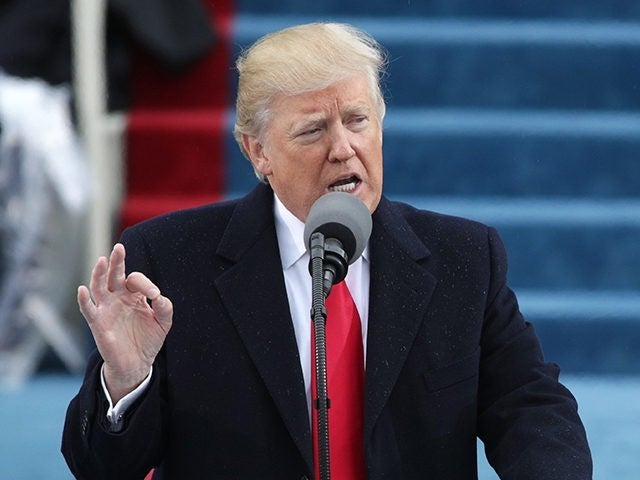
How can you explain the approximately 44% of the population (per some recent polls) that maintain support for a president who has:
· Peddled conspiracy theories about fake news outlets and rampant voter fraud
· Attacked the Judiciary Branch of our government and challenged long-standing checks and balances
· Been accused of sexual assault and was caught on tape bragging about his attempts at such behavior
· Ignored the Emoluments Clause of the U.S. Constitution by not divesting his foreign and domestic financial conflicts, frequently visiting his private, for profit club Mar-a-Lago, and maintaining regular contact with family members who operate his businesses – some of whom are working directly in the White House
· Informed the U.S. population indirectly through an interview with Reuters that a “major, major conflict” with North Korea was possible
· Rescinded regulations put in place to forestall climate change and reduce carbon emissions
· Attempted to push through a new healthcare plan that included a tax cut for the extremely wealthy and threatened the coverage for millions of Americans
· Failed to deliver on almost all of his campaign promises included in his Contract with the American Voter
This level of support is also surprising considering that the following threats to our national population and the global population at large do not recognize or protect particular groups based on “human” factors such as political affiliation, occupation, religious belief system, spirituality, or moral code:
· Acute and chronic general medical conditions including infectious diseases
· Weapons of mass destruction (e.g., radioactive dirty bombs; explosives; gaseous nerve agents)
· Pollution (including many land-, water-, and airborne carcinogens)*
· Conventional domestic weapons in the hands of those unfit to be in their possession (e.g., mentally ill or with malicious intent)

Smog covered New York in 1973 near the time of the enaction of the Clean Air Act. The Trump Administration’s stripping of environmental protections aimed at curbing climate change and reducing pollution endangers all lives - liberals and conservatives alike.
In other words, whether you want to admit it or not, all of us whether we be “libtards,” “right-wing nut jobs,” “traditional liberals,” “Constitutional conservatives,” “reactionaries,” independents, evangelicals or apathetics are in this together –
We all stand to lose by the ongoing activities of the current Administration including, but not limited to: inappropriate ties to Russia, violations of the Constitution, nepotism, fear-mongering, saber-rattling, destabilization, and questionable presidential fitness for duty.
So how do you explain the continued support of this president by so many people?
1. Ignorance
This is an umbrella term meant to characterize individuals whose allegiance and pro-Trump behavior is based on a position in which all of the facts are not considered. This can happen by active and passive mechanisms that can include narrow-minded media intake (active) or lack of access to mainstream, public sources of socio-cultural information.
A controversial explanation emerged last year that described the Dunning-Kruger effect, or the inability for one to realize his or her own incompetence. According to the neuroscientist who promoted this idea, part of Trump’s appeal is rooted in psychobiological elements that are present in his supporters such as increased sensitivity to threatening stimuli (and perhaps a larger amygdala, the brain’s fear center), higher attentional engagement and arousal, and adherence to Terror Management Theory.
In short, this theory is based on the notion that some people manage their fear of death and the recognition of their own mortality by adopting belief systems, ideologies, and identities that focus on life and its meaning. Allegiance to these belief systems (and to a particular figure) can be strengthened when one is reminded of their mortality as is often the case when leaders such as Donald Trump use fear as a primary theme of their platform.

2. Unwavering support of party
Individuals in this category are the die-hards whose political affiliation runs deep and they will “ride the tide of success” when their party of choice is in power and “go down with the ship” when their political affiliation is out of power or favor.
While this type of support is less obvious in the general public, it is well exemplified by Republican members of Congress who share the same party affiliation as the president. Several votes and maneuvers within Congress have been split along party lines including the confirmation of questionably capable Cabinet members, the proposal of an investigation into the president’s tax records, and potentially probing the apparent hacking of the general election by Russian operatives.
3. Endorsement of the message
People who fit this description are those that actively support, believe, and promote the platform put forth by this administration during the campaign. While this represents a significant number of people they can be identified in a few general categories. One group is the upper 1% of the population otherwise known as the “super-rich” who stand to benefit from proposed tax cuts and can effectively ignore the arguably malicious means by which they are obtained (at the peril of the middle and lower classes). A second group consists of those individuals who believe in the “philosophies” extolled by the president and his inner circle that can politely be described as racist, nationalist, jingoistic, isolationist, and/or bigoted.
In 2017 America, no one is going to deny that these people exist and hold beliefs that denigrate others based on color, ethnicity, religion, and/or country of origin/residency. A third group is those who misinterpret or misrepresent the message of the political figure that they support. For example, thousands clamored for the repeal and replacement of Obamacare without realizing that this was the same as the Affordable Care Act through which they obtained their existing health coverage. It should be clear at this point that membership in these categories is not mutually exclusive.

Donald Trump greets an enthusiastic crowd of supporters on August 21, 2015 in Mobile, AL. The Terror Management Theory suggests that individuals strongly associate with political figures if they believe they are part of a greater cause that will give their life enhanced meaning (e.g., waging the fight between good and evil).
Any discussion of who does or does not support a particular candidate or political figure has to include mention of a phenomenon known as ingroup/outgroup psychology. This refers to the observation that we identify with those with whom we share certain qualities (our ingroup) and negatively view those who do not share these qualities as an outgroup.
The identification of one’s ingroup can be determined by biologically-derived factors such as sex or geographically-based factors such as support of a local sports team. Politics is no different. In fact, many have argued that ingroup/outgroup psychology, or an “us versus them” mentality, has become more divisive in recent years.
A great example of how simple group dividing lines can be established and how quickly animosity toward your outgroup comes from an exercise conducted by Iowa schoolteacher Jane Elliott in 1968. In the aftermath of the assassination of Dr. Martin Luther King, Elliott divided her class by eye-color (brown versus blue) and assigned a higher “social status” to one eye color group. Alarmingly, it did not take long for the higher status children to ridicule and ostracize the lower status group.

Jane Elliott in her classroom in 1968 when she demonstrated to her third grade students how easy it was to create ingroup versus outgroup animosity.
For an example of this type of behavior today, one need not go much further than Facebook, Twitter or the comments section of online media articles.
What the current president was able to do, and what he continues to do, is to move between ingroups by “playing to” the characteristics of the specific group. This is not unique to him, or con men in general, but what makes the current situation unique are the high stakes involved and the potentially damaging consequences of his “ingroup surfing.” A timely example of this behavior, is the president’s appearance at an NRA convention in Atlanta on Friday in which he returned to campaign form and called Elizabeth Warren, a Senator who reports having a Native American background, “Pocohontas”...despite being the sitting President of the United States; a move that was repeatedly most likely because it “played to his base.”
To summarize, the approval rating and support for the current president will never be zero due to neurobiological and psychological forces that often operate below the level of consciousness as well as conscious decisions to back policies that are beneficial to the desires of a few but not necessarily for the well-being of the many.
